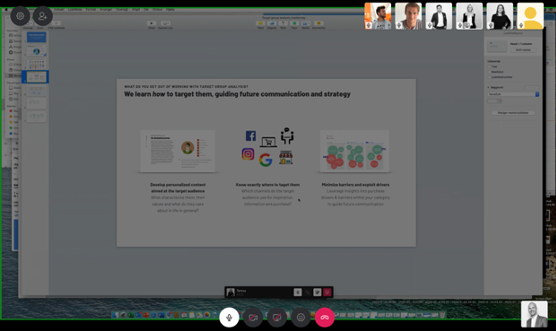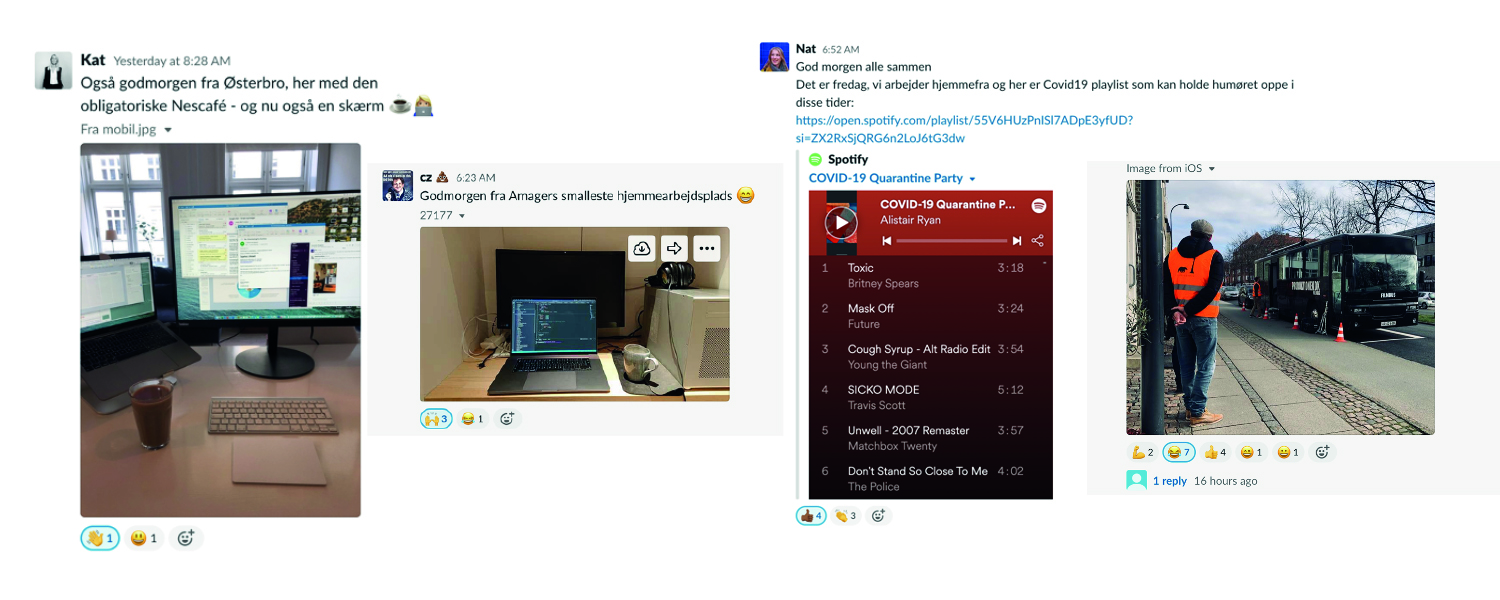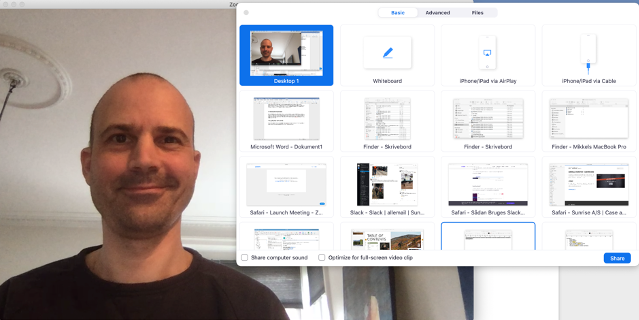Work Wherever, Whenever – Must Have Digital Tools for Remote Workers
When Danish Prime Minister Mette Frederiksen on Wednesday, March 11, presented the authorities’ strategy to reduce the Coronavirus spread in Denmark, we quickly took initiatives at Sunrise. We announced that the entire organization should work from home with immediate effect. Like everyone else, we have a responsibility to contain the possibility of the spread of Coronavirus. We are around 40 people, who usually sit closely together in Hillerødgade, but now have to activate 40 home offices.
So, what have we done? Considerations in relation to technology
First and foremost, we had the idea that everyone should get rolling on the same platform very quickly, so we could start working together in teams. We considered Microsoft Teams which we use with a large number of clients, but the assessment was that it is based to a large extent on tools in the Office suite It is perfect when you work with the client where a PowerPoint presentation is the focal point – then it really makes good sense. The challenge is that all of our presentations are in the Mac-based format, Keynote.
In addition, we also had Google Hangout in mind. A super nice tool where you can video chat directly in a browser. It is a tool that comes into play especially if you take full advantage of the G-Suite. You may have emails hosted with Google and be working in Google Sheets? Well then, in that case, Hangout would be brilliant.

The right tool for our internal communication
We needed an all-in-one workflow tool that could help us safely through these weeks – and the choice was to go with Slack. For some, Slack is a chat tool that reduces the number of emails in an organization, but I consider it as being much more than that. For me, it’s a communication hub. The good thing about Slack is that you can get a deep dive even on the free version of the tool. You get the option of having 10,000 messages saved in Slack and a lot of features are open without having to pay. However, in Sunrise we had to go for the paid version, which costs 6.25 € per employee in the organization per month. With the paid plan you have the opportunity to make conference calls throughout groups.
(A call where we took turns showing each other presentations)
You quickly adapt to the new way of working together – but remember to have fun doing so!
With Slack you start by creating your own profile – ours is called Sunriseagency.slack.com and then all employees join this workspace. In the Workspace we have a large number of channels that represent both internal work projects and tasks we solve for our clients. In these project groups there are affiliated people working together on the project. Just the same as if a group email is sent out. The smart thing here though, is that you can start threads within the groups, so that if one team member calls me with a question targeted at me, I can answer without anyone else being disturbed by this.
We have divided our internal channels into groups that are more formal and groups that are more informal. In our hangout group, we send each other nice homework pictures or recommend to each other what we should listen to. In our more formal group, we can follow different tasks. Among other things, when people are recording on location (with plenty of hand sanitiser and appropriate distance!)

How to get started with Slack
Getting started with Slack does not require much technical insight. Go to slack.com and create a profile. You can then invite your colleagues. There are a lots of videos on YouTube and Vimeo that give good advice on using Slack. Among other things. you can install a wide range of apps so that you can, for example, connect Slack with your CRM system or via Outlook can send mails into Slack. They also have an app that works really well for both iPhone and Android, which allows you to participate in project calls even on the go.
What about client meetings?
Clearly, client meetings have either been postponed or moved to a digital platform. When clients invite us to a meeting, it happens in all sorts of different platforms. For the customer meetings, we have not chosen Slack. Often, we need to be able to choose what clients should see. We need to be able to seamlessly switch between presenters etc. Here we find that Slack is too simple for our needs. Plus, there is a limitation to Slack on how many can join (13 people). So, we needed a tool that has some more detailed features. The choice was to go with Zoom. Zoom is a dedicated conference call service that allows you to easily host video conferencing and / or online meetings with your clients.

Just like Slack – with Zoom, you come a long way with a free account
Anyone can create a free profile on zoom.us and can start hosting client meetings. However, please note that the free version has a limitation which allows the meeting to have a maximum length of 40 minutes. It is fine to test if it is something for you, but since for us we are dealing with important client meetings, it is not appropriate to be interrupted in the middle of formal discussions, so we have chosen to invest in the tool. It only costs $ 20 a month to have two hosts in one’s account. For customers, it is free to attend. They receive a link that leads them to download a free program, and then they get started. In our plan,100 people can attend a conference at the same time.
(You can choose what the client can see and switch between your views)
A practical suggestion for Zoom
We have decided to go with the pro version of Zoom with two hosts, but it is still important that there is discipline in how Zoom is used. We have created a system so that you book, just as you would do with a meeting room and take a time that is not already taken. If, in addition, we have shorter meetings, we can use our own profiles with the free account (and the 40-minute limitation). This has worked for us so far. Furthermore, Zoom also has a Webinar feature, which we have not yet used.
Stay safe out there!
That was my recommendation for two unique tools, Zoom and Slack, that can help you through a difficult time. I hope you find it useful out there in the new reality of the remote workplace. Take care of yourselves.